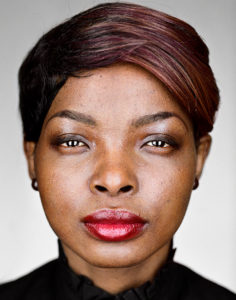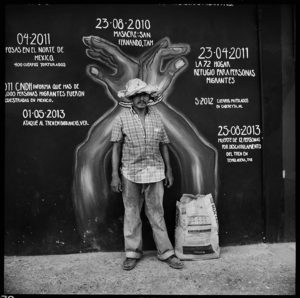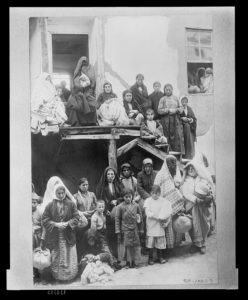Join us for conversations that inspire, recognize, and encourage innovation and best practices in the education profession.
Available on Apple Podcasts, Spotify, Google Podcasts, and more.
Note: Sections of this background are taken from the Collection introduction because they support the learning targets of this activity.
Individuals and groups of people have been displaced throughout history and across the planet. When we examine this phenomenon, it is important to recognize that international efforts are required to secure the rights of displaced people. As is the case with a stateless person, one country is not able to advocate for a person or group of people. Individuals and governments can be advocates, but international agreements are helpful in examining the systems in place that lead to displacement.
A turning point in recent history was the 1951 United Nations Convention relating to the Status of Refugees. This led to a clear definition of the term “refugee,” and it outlined the rights of the displaced and how different nations could join to assist displaced persons. Since the 1951 Convention, the definition of refugees has been expanded to be more inclusive of gender (the pronoun “he” was used exclusively in the original definition) and has allowed for more clarity. For example, we now think of displaced persons as being internally displaced when they do not cross a border, or externally displaced when they do cross a border. The 1951 definition did not require all countries to enforce the mandates, allowing for what is often termed “opt in/opt out.” Little is mentioned about persons who seek asylum (protection) from a country by fleeing from it. The 1951 Convention established the basic rights of refugees, which are:
Despite these rights being protected under the 1951 Convention and other human rights treaties, refugees in various countries do not enjoy the full or equal legal protection of fundamental privileges. Many countries detain refugees in detention centers.
Subjects
Created in 2004, the UN’s Guiding Principles on Internal Displacement state that IDPs retain the economic, social, cultural, civil, and political rights as all people in their own country of citizenship or residence. They have the rights to basic humanitarian assistance (food, medicine, and shelter), to be protected from physical violence, to education, to freedom of movement and residence, to participate in political affairs, and to participate in economic activities. Further, they have the right to assistance from competent authorities in voluntary, dignified and safe return, and resettlement and local integration (including help in recovering lost property and possessions). It is the primary duty and responsibility of national authorities to provide protection and humanitarian assistance to IDPs within their jurisdiction.
Download 1951 UNHCR Refugee Definition (PDF)
Distribute copies of the 1951 UNHCR definition of refugees. On their own, have students circle words or phrases they do not understand or are new to them. Have them read over the definition a second time, this time looking at how words might have been chosen to influence public discussions or create images about refugees. What words are very descriptive? For example, how might words like “persecuted” influence public discussions and images about refugees? Does this phrasing cast refugees as helpless or as victims? Could the phrasing be interpreted as describing people who are passive rather than active? Have each student identify at least two words or phrases that create imagery about refugees.
Once students complete these two reads (first to identify new words and then to evaluate word choice), place them in groups of three. In these groups, have them follow two steps:
After these two steps, hand out photographs 10016, 10018, 10014, and 10043, and then have the groups determine if their ideas about the wording of the definition are translated into the photographs. Have each group select one photograph that they believe is an example that fits with the 1951 definition (more than one group can select the same photograph):
…owing to well-founded fear of being persecuted for reasons of race, religion, nationality, membership of a particular social group or political opinion, is outside the country of his nationality and is unable, or owing to such fear, is unwilling to avail himself of the protection of that country; or who, not having a nationality and being outside the country of his former habitual residence as a result of such events, is unable or, owing to such fear, is unwilling to return to it.
In the case of a person who has more than one nationality, the term “the country of his nationality” shall mean each of the countries of which he is a national, and a person shall not be deemed to be lacking the protection of the country of his nationality if, without any valid reason based on well-founded fear, he has not availed himself of the protection of one of the countries of which he is a national.

#10016

#10018

#10014

#10043
Each group should prepare a short rationale as to why they chose their particular photograph. Depending on the size of the class, groups can provide their rationale in a short presentation to the class, or they can write a two or three sentence reason, and post it with the image around the room. The class could then go on a “gallery walk,” where they look at each other’s selections and consider what their group selected.
After the groups have reviewed their classmates’ selections, inform them that the images are of refugees, or of workers and camps aiding refugees, and that the 1951 definition has evolved. Today, many new important terms are used, including the concept of displaced persons. Students would also benefit from learning that it is most helpful to avoid what is called “deficit thinking,” and use “strength-based thinking.” If you introduce these terms to students, the following descriptions might be useful:
With that in mind, have the students practice their thinking through these two lenses by looking at four images. Have students partner with someone and talk about what they notice if viewed through a “deficit lens” and when viewed through a “strength-based lens.” Ask students to consider if the photographer selected an image that emphasized deficit or strength-based thinking, or if they cannot tell.
Ask students to explain to the class why definitions, ways of thinking, and public policies play important roles in the welfare and assistance of displaced people. List reasons on the board, and ensure that the students understand the need for international efforts.

In addition to considering how our thinking of displaced peoples has expanded, we now have many more terms to help us understand the diversity of people who are displaced. Hand out the vocabulary terms and have students work with a partner to ensure they can differentiate between each of the terms on the sheet. To further develop student understanding, have them reconsider each photograph viewed in this activity, and determine what term(s) describe the people/person. For example, image 10018 would fit with the definition of “Internally displaced person.”
Download Vocabulary Terms (PDF)